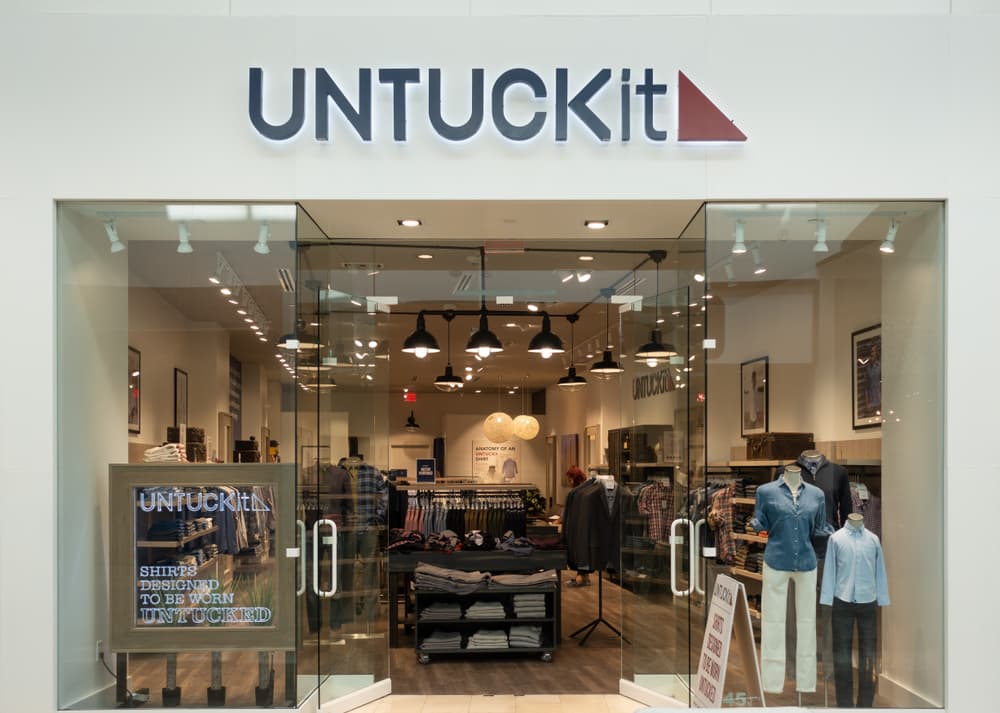Data-Driven Expansion: DTC Brands Explore Stores

On this page
In recent years, many digitally native brands eagerly expanded their physical retail presence, driven by pandemic-era rent discounts and a surge in demand for non-essential goods. However, as landlords end those discounts and sales for non-essential items dip, these brands are now rethinking their growth strategies. According to ModernRetail, many DTC companies are scaling back their original plans to better align with current market conditions.
As DTC players adjust to market conditions, they’re left questioning the level of investment stores require. But now, more than ever, stores are key to long-term brand trust, resilience, and ultimately, growth. In this blog, I take a look at the factors shaping DTC strategy today, including why physical stores remain relevant.
MORE FROM ANDREW: THOUGHTS ON DTC DATA MONETIZATION (VIDEO)
Key DTC Trends In 2024
DTC is going through a bit of a redefining moment…critics say it’s a faulty business model, while supporters (myself included) believe it will forever be a critical part of new and emerging brands going forward – it’s simply evolving. Despite that point of view, it’s a fact that many of the darling DTC brands have recently sold for humbling multiples and valuations, gone bankrupt, or are publicly traded at abysmal valuations compared to the pre-IPO valuations. As a result, many observers believe the DTC model is at fault.
Unfortunately, there’s some truth to that. Digital marketing has become more expensive in recent years. The barriers to entry have lowered, competition has intensified, and capital has become scarcer and more costly. The days of founders being able to easily raise capital, invest in paid digital channels, and achieve great returns on ad spend (ROAS) are gone.
However, I don’t take these signals to say that DTC is dead; rather, it simply has a shorter runway. In other words, the channel hits the point of diminishing returns much sooner than before, but it is still the best way to build a brand from scratch.
Unsurprisingly, I’m therefore seeing more sustainable growth trajectories from influencer-founded DTC brands. When digital marketing is one of the most expensive growth levers in the industry, the “hack” is to be founded by an influencer willing to tap into their followers “for free” in exchange for some equity. Take a look at Chamberlain Coffee, for example.

The brand was created by Gen Z YouTube influencer Emma Chamberlain. The brand initially started as a DTC project but has now shifted its focus to retail. The company's presence has grown significantly, from being available in 1,000 stores in 2023 to over 12,000 in 2024, as reported by Forbes. It has expanded internationally into Circle K stores across Canada and is actively engaging in brand partnerships. Earlier this spring, Chamberlain Coffee collaborated with Kendall Jenner's 818 Tequila and recently introduced a product collection with actress Shay Mitchell's luggage brand BEIS. This influencer-led brand capitalized on its founder’s social capital, thereby making it more competitive without sinking funds into ever-growing digital marketing expenses.
Why Stores Remain Critical For DTC Brands
Like all industries, retail ebbs and flows. When digital marketing got expensive, everyone ran to offline channels: stores, wholesale, catalogs, OOH advertising, etc. And when the rents got expensive they all tried to cut back. And you’d be surprised by the number of founders who think you can pivot out of a bad lease as easily as they would a digital marketing strategy – that’s just not how it works. Unsurprisingly, many of those retailers are no longer around or still struggling to this day.
However, if the goal is longevity, that staying power is derived from long-term and diversified investments, not the same cheap investments over and over. In fact, the thing I like most about brick-and-mortar is what makes it so daunting: the long-term, fixed-cost nature of the investment. This dynamic actually enables significant leverage as you grow: the rent is fixed whether 100 or 1,000 people walk through the door. This means that the more you grow, the more that cost gets spread across a larger base of customers, and therefore the lower your marginal customer acquisition cost (CAC) becomes. And in times of volatility, having a fixed cost basis can actually be a huge competitive advantage if you know how to protect your downside.
Brands like UNTUCKit, Bonobos, and Warby Parker are good examples of playing the long game. These brands have generally profitable portfolios (so I’ve heard), and, at a minimum, they have winners in their portfolios – which is kind of a takeaway in and of itself: retail channels are not binary in their success; they’re a sum of their parts. You can have a portfolio with 90% winners, but that 10% could be losers that wipe away all of those wins.
Many DTC furniture companies, such as Maiden Home and Article, are also opening physical stores. Wayfair has been attempting to succeed in this area for years, as its online sales continue to decline.
READ MORE: How DTC Brand, UNTUCKit Drives Conversion In Physical Stores
How DTC Brands Benefit From Expanding Into Stores
I already mentioned the fixed-cost leverage brands get with retail, so now I want to talk a little about the more commonly spoken benefit: the “halo effect.” Most DTC brands will witness the “halo effect” when they open stores—but be cautious because there are caveats. In many cases, opening a store will actually drive a “J-Curve” phenomenon, where there is a short-term channel shift. Customers who would have bought online now shift their spend to offline, often called ‘channel cannibalization.’ So, measuring the overall geography to see the omnichannel picture is essential.

Over time, however, the halo effect usually, but not always, comes to fruition. Because of this short-term flatlining (or, in some cases, even decline) in surrounding e-commerce sales, I caution brands to also monitor their digital business using a physical lens: the CBSA. I’ve seen in a couple of instances where opening wholesale partnerships has even cannibalized the local e-commerce channel, and the team had no idea because they only viewed the e-commerce channel as a national total.
And, yes, when stores close they can definitely cause a drop in e-commerce business. It’s always funny to hear when brands or their investors are surprised when that happens, because they also tend to explicitly acknowledge that customers browse online and buy in stores, and vice versa. If you believe in the halo effect, you have to also believe in the inverse of that.
Rethinking Your Store Strategy? My Advice
The market is in flux—and always will be—but these two pieces of advice ring true.
1. Be patient.
Everything takes time: finding a good deal, finding a good team, training that team, developing the playbook, building brand awareness, and recognizing the ROI. Marketer-driven brands tend to kill the store channel prematurely because they expect the same returns as marketing dollars in the same time horizon. A good payback period is 24 months in retail, meaning it’s a great outcome if you recoup your investment in 2 years! Because if you have a 10-year lease, that means you’ve got 8 years to print cash.
2. Trust the data.
The biggest mistake I’ve seen in site selection is when an executive or broker thinks you’ll do really well in a market when the data says otherwise. The supporting argument is usually “The data must be wrong, this is my backyard and I know we’ll do well here.” In my experience, when you put data up against a gut feeling, the data wins more than 50% of the time.
The main challenge in expanding offline is the significant upfront fixed cost incurred before seeing any results: you’ve got to jump off the cliff without knowing for sure whether there’s a soft landing. It's crucial to remember that as your business grows, the benefit of leveraging fixed costs can work in your favor. Conversely, if your business starts to decline, the fixed costs become more expensive per customer acquisition, which can negatively impact your business. I fundamentally believe that a consumer brand should be capable of making a physical store successful. If they can't, it's likely because they are too in their lifecycle (ie brand awareness is too low) or haven't yet identified the right business model. In the latter case, it's in their best interest to experiment, make changes, and adapt - all of which require data.
To run a retail fleet without investing in the tech to measure, test, and iterate is like running a website without analytics. You have to have the data. It’s always worth the investment because the impacts of mistakes are so much greater (and more expensive) in brick-and-mortar retail.
WHILE YOU’RE HERE, EXPLORE: The State Of Data Monetization In Retail Today
About the author:

Andrew Neelon, Founder & CEO of FOURWALL
Andrew is the founder & CEO of FOURWALL, a brick & mortar advisory and insights platform. He previously held executive roles at Elase Med Spa, Interior Define, Bonobos, and Walmart. He also serves on advisory boards for VHS Ventures and The Lead, and on the Associate Council for Delivering Good.



